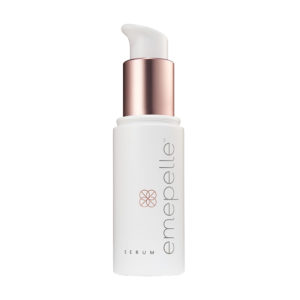Menopause marks a major shift in a woman’s life. Suddenly she’s hot then cold, she’s noticing changes in mood or other physical symptoms. She’s also likely noticing a difference in her skin. As women lose estrogen during the period of perimenopause and menopause, skin changes. These effects on skin during perimenopause and menopause are summed up as Estrogen Deficient Skin. Learn how menopause may change your skin and how you can combat the visible signs of aging that often occur during this period of life.
Perimenopause, Menopause and Skin Changes
Visible signs of aging can occur at any age, just as intrinsic aging within the skin begins around when we enter adulthood. From the age of 18, we lose around 1% of collagen each year. This becomes much more stark during menopause when collagen loss speeds up dramatically. Estrogen Deficient Skin leads to a drop in up to 30% of dermal collagen during the first five years of menopause. After menopause, collagen continues to drop steadily at a rate of around 2.1% per year.
Collagen and elastin, two connective tissue proteins, help keep the skin full. When collagen and elastin production slows, the middle layer of the skin—known as the dermis layer—can lose volume, leading to sagging skin and making way for deep wrinkles.
Estrogen doesn’t just affect collagen production in the skin. In fact, the skin is the largest non-reproductive organ that is impacted by estrogen. Hormones changing during perimenopause and menopause can affect:
- Moisture retention and barrier function
- Elastin content
- Epidermal thickness
- Skin cell proliferation
- Inflammation
- Wound healing
Changes in estrogen production also can be responsible for under-eye creping and wrinkles. Some of the first age-related skin changes occur under and around the eyes.
Perimenopause Vs. Menopause
While menopause is a frequently mentioned time in a woman’s life, the years leading up to it also see stark changes in physiology. Menopause itself officially occurs one year after a woman’s last menstrual cycle. The time leading up to menopause, often marked by declining estrogen levels and less regular menstrual levels is known as perimenopause. According to the Cleveland Clinic, hormonal changes are often seen 8 to 10 years ahead of menopause. This typically occurs during your 40s or as early as your 30s, though the drop in estrogen accelerates markedly in one to two years before menopause. This drastic shift is typically when a woman would notice the changes and consider herself perimenopausal.
During perimenopause, the skin endures some of the same changes that women in full menopause experience, including slowing collagen and elastin production, dryer skin, and increased fine lines and wrinkles.
Addressing Estrogen Deficient Skin
There is no stopping mother nature and human biology. Menopause will happen. Some women may turn to estrogen products or medication to help improve the symptoms associated with menopause such as hot flashes, mood swings and trouble sleeping, but these options may cause unwanted side effects. Hormone replacement therapies have potential risks and are not specifically designed to have an impact on the skin. While non-hormonal treatments such as phytoestrogens lack clinical evidence. Neither of these alternatives are designed to help with Estrogen Deficient Skin but instead target other side effects of menopause.
While life expectancy has increased by 30 years since the early 1900s, the onset of menopause has only moved forward by about 5 years—meaning that even with more time before they start menopause, women of today may deal with Estrogen Deficient Skin for nearly an entire third of their lifetimes.
Emepelle and Menopause
Emepelle is a line created specifically to help women address signs of Estrogen Deficient Skin non-hormonally. Emepelle uses revolutionary MEP Technology, which has been clinically proven to be a safe and effective way to help address the symptoms of Estrogen Deficient Skin. MEP specifically improves skin hydration, firmness, luminosity and the appearance of fine lines and has an impact exclusively on the skin and nowhere else in the body. After just 14 weeks, clinical studies have shown that women who used this innovative skincare line experienced impressive results:
- 54% of participants saw an improvement in dryness
- 39% saw an improvement in dullness
- 19% saw an improvement in laxity
Dr. Diane Berson, a New York-based dermatologist, explains the revolutionary effects of MEP: “A woman could be doing everything right. She could be using her antioxidants every day, using the appropriate skin care, using daily sun protection, eating a healthy diet, drinking enough water, and she’s still not going to look her best because she’s missing that one factor after menopause. She’s missing that estrogen factor.”
Emepelle Serum and Emepelle Night Cream with MEP Technology are recommended for women who are either in perimenopause or menopause. Emepelle Eye Cream also is formulated to address fine lines, under-eye puffiness and dark circles. These skincare products work on all skin types and are fortified with additional ingredients proven to help provide additional anti-aging benefits (such as hyaluronic acid or retinol). Learn more about Emepelle’s line of products.




